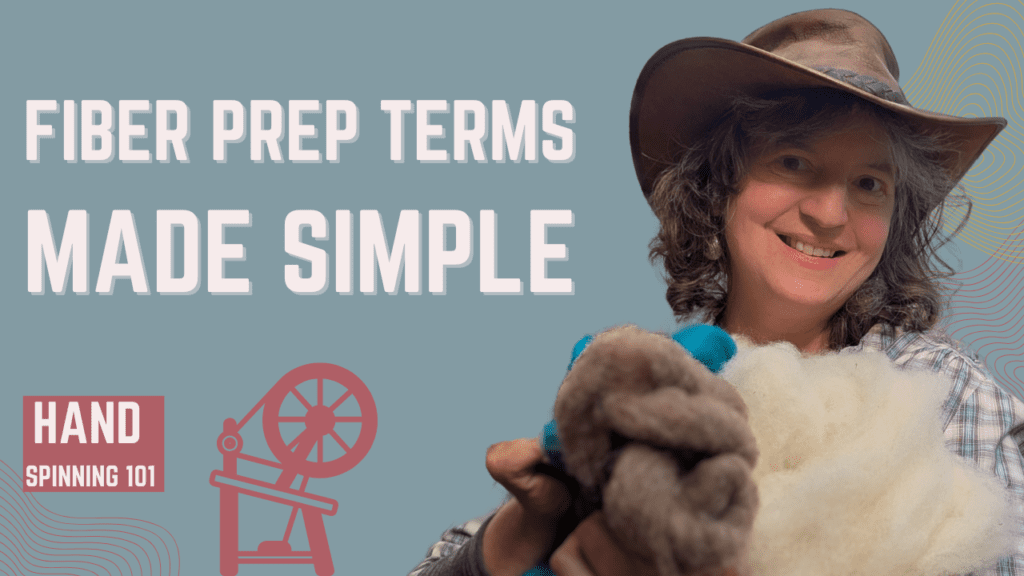Roving vs. Combed Top: What’s the Difference?
A Quick Guide to Understanding These Two Fiber Preps and When to Use Them
One of the most common questions I see in the comments section of my videos is:
What’s the difference between roving and combed top?
If you’ve ever shopped for spinning fibre and felt confused by these terms, you’re not alone! They often get used interchangeably (sometimes even incorrectly), but the truth is, they’re quite different—and knowing how they behave will help you get the results you want in your spinning.
So, let’s break it down!
What is Roving?
Roving is a carded fibre preparation, meaning the fibres are brushed into a loose, airy arrangement with a random crisscrossed pattern. It’s fluffy, has plenty of loft, and retains a natural bounce—perfect for warm, cosy handspun yarns.
Key Characteristics of Roving:
✔️ The fibres are arranged in different directions, creating an airy texture.
✔️ It contains a mix of short and long fibres, giving it a slightly uneven but soft quality.
✔️ It drafts easily, making it great for woolen-style spinning.
✔️ Produces a warm, lofty yarn with a slight halo and lots of air trapped between the fibres.
Best Uses for Roving:
- Ideal for woollen spinning, where you introduce lots of air and twist, making light, fluffy yarn.
- Perfect for cosy garments like sweaters, hats, mittens, and scarves.
- Great for spinners who love a soft, bouncy, and textured handspun look.
What is Combed Top?
Combed top is a combed fibre preparation, meaning the fibres are processed to align perfectly parallel to each other. Short fibres and any remaining vegetable matter are removed, leaving only long, smooth fibres behind. This creates a sleek, dense fibre prep that spins into strong, smooth yarn.
Key Characteristics of Combed Top:
✔️ The fibres are all neatly aligned in the same direction.
✔️ Contains only the longest fibres, making it smooth and easy to control.
✔️ Ideal for worsted-style spinning, producing a firm, structured yarn.
✔️ Less airy than roving but very durable and sleek.
Best Uses for Combed Top:
- Ideal for worsted spinning, where fibres remain aligned, creating a dense, strong yarn.
- Great for stitch definition, making it perfect for socks, lace, and intricate knitting.
- Works well for woven projects, where durability and smoothness are key.
How to Choose Between Roving and Combed Top
So, which one should you choose? It depends on what you want your final yarn to be like!
✔️ For soft, airy, and warm yarn → Choose roving
✔️ For smooth, strong, and sleek yarn → Choose combed top
✔️ For texture and bounce → Roving is your friend
✔️ For durability and stitch definition → Combed top is the way to go
Final Thoughts
Both roving and combed top have their place in hand spinning, and there’s no “right” or “wrong” choice—it’s all about what kind of yarn you want to create. If you’re new to spinning, I recommend trying both to see which suits your style best!
And if you want a visual breakdown of these fibre preparations, be sure to check out my latest Hand-Spinning 101 video where I walk through the differences in more detail.
Happy spinning! 🧶✨


